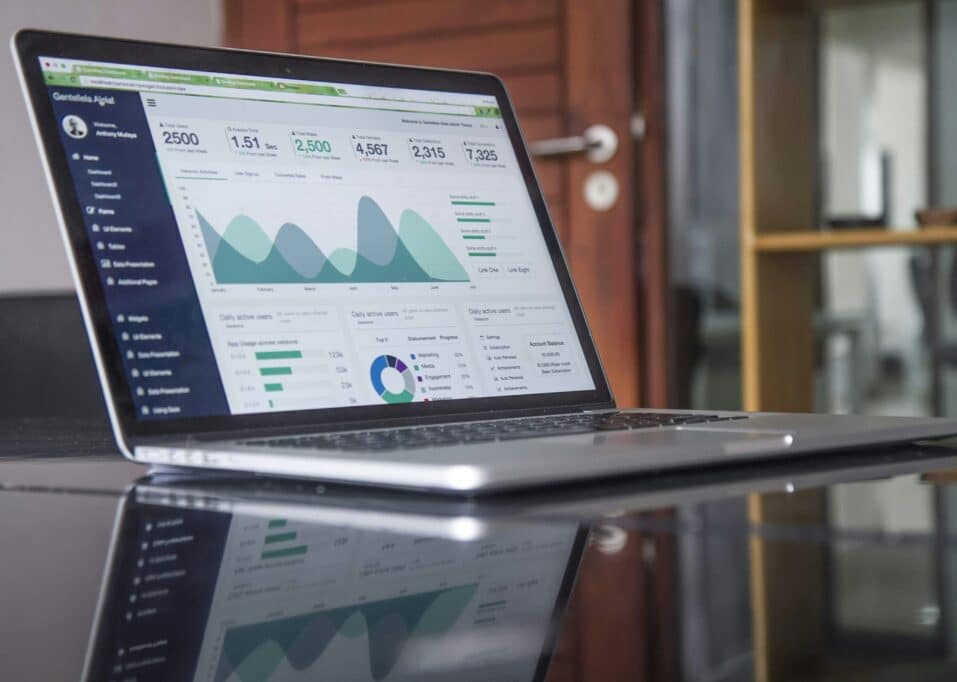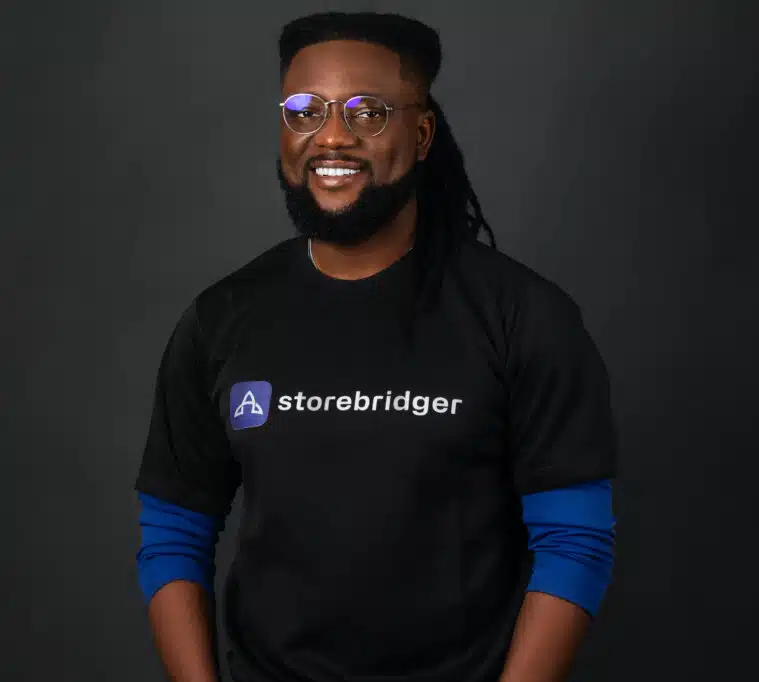This ex-Shopify employee is building a rival for the company he used to work for

A typical African small business sells through several channels. For some, walk-in customers are the central point of sales, reinforced by an influx through Facebook or WhatsApp. For others, sales happen simultaneously on the website, in-store, social media platforms like Facebook, WhatsApp, and Instagram, and sometimes marketplaces like Jumia.
But an issue arises when a customer tries to order a product on WhatsApp, and the vendor can’t instantly confirm whether the item is still in stock or has already been sold through the website, in-store, or on another social media channel.
Storebridger’s goal is to eliminate this problem by simplifying sales management for SMEs and centralising inventory across all the channels a business sells through.
The startup also provides businesses with tools to easily build a customisable web store without coding, as well as a point-of-sale system for managing walk-in customers.
Hameed Damee came up with the business idea when he began helping his wife run a small business; he noticed that it was difficult to manage sales across multiple channels or get a full view of the business’s inventory.
“There are a lot of irregularities around how businesses sell, and we want to make the process seamless by providing an omnichannel for SMEs to sell,” Hameed Damee, CEO & Co-founder of Storebridger, tells Techpoint Africa.
However, Storebridger’s value goes beyond ensuring a central inventory. The company’s ultimate goal is to give businesses the tools to access more credit from financial institutions by leveraging their sales and inventory.
Damee explains that, instead of the current system, where businesses attempt to raise capital from banks solely based on their financial statements, with Storebridger, their inventory can be an asset too.
“Most small businesses struggle to raise capital from banks. Banks tell them to submit their financial statements, but that doesn’t really reflect the business’s strength. But, with a centralised inventory, they can see the volume of sales that the business is doing and can better predict how well the business will do if they give them capital,” Damee says.
Storebridger’s origin
In 2020, Damee worked with Shopify as a Shopify Developer Partner, helping Shopify businesses curate the tools they needed to have the best experience on Shopify.
However, as a customer using the tool for his business, Damee explains that he realised Shopify was not built for the African market.
“There are a number of ways that Africans like to do business. For example, in an average Nigerian business, pricing is not fixed, and you cannot really customise pricing to your needs, or you have to install multiple tools to get the best experience.”
Because the tools available couldn’t meet the needs of their online store, and after Instagram shut down the business account twice —once with thousands of followers —Damee decided it was time to build a tool rooted in the African context that would give businesses more autonomy and flexibility in their operations.
In 2022, the startup began operations, providing businesses with a sales management tool. But as they interacted with more businesses, they realised that small businesses needed support in accessing capital, not just a way to manage their sales.
This discovery led to the integration of the embedded banking feature into its point-of-sale system, enabling businesses to access their sales and payment records in the same system and use their sales and inventory records to obtain bank credit.
Damee unpacks this by explaining that, unlike the current system, in which businesses manage sales and payments separately, Storebridger’s model integrates everything into a single, seamless platform. So, if a business uses a bank’s PoS terminal, the bank can reconcile its payment history with its sales records to determine the business’s strength.
“The upside of this is that if you want to access credit from banks, you don’t need to submit your financial statement. The system automatically determines how much credit you can access based on your sales record because the banking portal and the sales portal are in one place,” He says.
Hameed Damee’s journey to Storebridger


Damee lived many lives before choosing to settle with Storebridger. He started out teaching computer science at a primary school before fully transitioning into technology.
“Interestingly, at the time, I had experience doing computer-aided designs, and I had an offer to work at an architectural firm, but I chose teaching instead.”
Then in 2011, he started his own company, selling software training to corps members in partnership with the National Youth Service Corps (NYSC).
When Damee fully transitioned into technology roles, he began as a software engineer at Nairabox, then held the same role at other companies like Tradefada, Shopify, and InDebted, building APIs, maintaining database infrastructure, and developing custom solutions and software for businesses.
Following these, he worked as a Frontend Lead at Sterling Bank, where he revamped the bank’s buy-now-pay-later product— Alternative Bank.
“At the time I joined, they were doing roughly about ₦15 million month-on-month. But, as at the time my team was done working on the product, we were doing about ₦50 million,” Damee says.
Before deciding to focus solely on Storebridger, he worked at a Spanish unicorn, Factorial, as a Software Engineer.
Storebridger’s market
At inception, Storebridger was focused on serving every business category.
Damee tells Techpoint Africa that when the company launched, one mistake they made was trying to solve for every business in Nigeria
“But eventually, we learnt that we could not solve for all businesses at once. So, we chose four sectors to streamline our solution for and started building for those sectors.”
Now, the company serves businesses in the fashion, electrical and electronics, restaurant, and supermarket industries.
Storebridger currently operates in Nigeria and will be expanding into other markets in the near future.
Business model and advantage
The company charges businesses a transaction fee of 2% to 4%, depending on the sales channel. For example, restaurants that use Storebridge’s QR code menu pay 2%, but for the web store, an invoice, or a payment link, they pay 4%.
The startup also charges between 10% and 20% on some of the value-added services it provides.
Damee notes that Storebridger’s advantage is in its pricing and simplicity.
“You won’t ask an average Nigerian business to pay $100 to $120 a month; that cost is too much for them. The big supermarket and restaurant chains can afford that, but the SMEs cannot.”
He adds that while Storebridger has competitors like Bumpa and Order Africa building for the African market, none of these competitors are exposing businesses to credit opportunities as Storebridger is.
“We understand the market better, and that influences what we are building for the industries that we are targeting.
But while more established competitors like Bumpa, which has over 100,000 customers across Africa, do not currently facilitate credit for businesses, if they begin to integrate similar credit-access features, it could pose a significant challenge for Storebridger.
Moreover, unlocking access to credit for SMEs is a complex problem. Banks are typically not in a hurry to lend to small businesses, especially in Africa, where running a small business can often be more about survival than expansion, making them less attractive to traditional lenders.
However, Damee maintains that if banks can look beyond the inflows and outflows in a financial statement and get a more holistic view from a business’s sales history, they can make more decisions in favour of small businesses.
The future
Storebridger’s goal is to help people launch businesses without any hurdles.
“The future we see is whether you’re just starting or you are already doing some numbers, your growth is not limited by your geography and is not limited by access to credit,” Damee says.
But beyond this, he visualises a future where Storebridger can help small and medium-sized businesses grow into large enterprises by giving them the tools they need to scale.







Leave a Reply